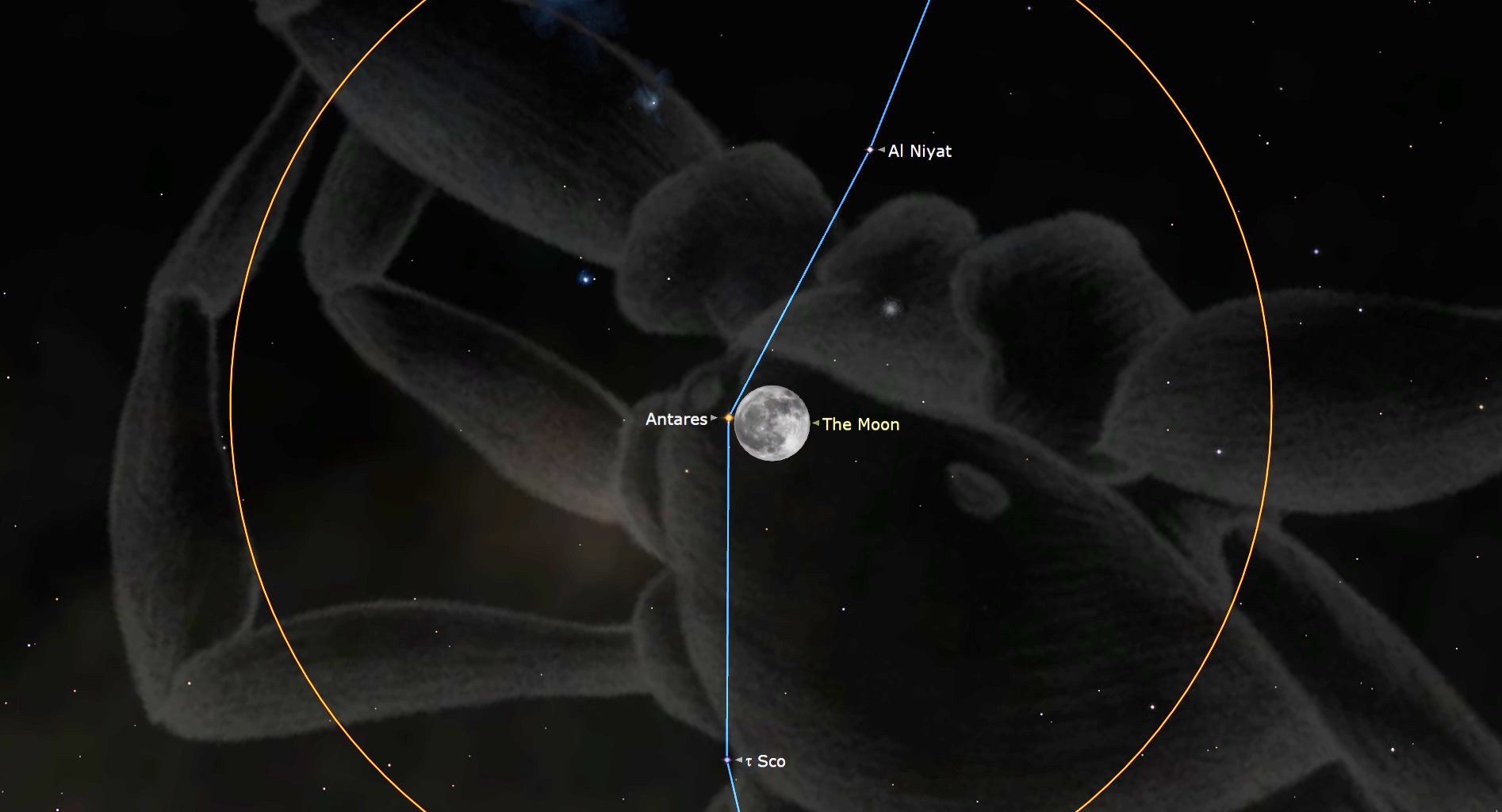See May's Full Flower Moon blossom in the night sky tonight
Because of its location in the sky tonight, the Full Flower Moon makes for an excellent guide to help you learn the stars of the Scorpius constellation.

The full moon of May 2024 rides the Scorpion's back across the night sky tonight.
The Full Flower Moon will be in the Scorpius constellation tonight (May 23), rising in the southeast just after sunset. Because full moons occur when the sun and the moon are completely opposite one another in the sky, the moon will rise at sunset and set with the sunrise the following morning.
Because of its location in the sky tonight, the Full Flower Moon makes for an excellent guide to help you learn the stars of the Scorpius constellation. Shortly after it rises, the moon will occult - or hide - the red supergiant star Antares, which designates the "heart" of the Scorpion.
Related: Full moon calendar 2024: When to see the next full moon
Read more: How to watch bright red star Antares disappear behind the moon on May 23

Want to see the lunar occultation of Antares or the features of the full moon up close? We recommend the Celestron Astro Fi 102 as the top pick in our best beginner's telescope guide.
See our preview story for a full list of optimal viewing times for the U.S. locations that will be able to view the lunar occultation of Antares. Note that not every location will be able to see it, because the moon is close enough to Earth that moving from one location to another can significantly change the moon's apparent position against background stars.
Mercury, Venus and Jupiter are lost in the sun's glare tonight, but Mars and Saturn will rise in the east a few hours before sunrise.
The name "Flower Moon" comes from blooming flowers that appear in North America around this time of year. Other names include the Frog Moon, a name from the Indigenous Cree people of North America, named as such because frogs become active and loud in May in many locations.
Breaking space news, the latest updates on rocket launches, skywatching events and more!
In other parts of the Americas, different peoples have their own traditional moon names. The Haida people of what is now British Columbia in Canada, for example, called the May full moon the "Food Gathering" moon. Among the Cherokee people of the southeastern United States, May's full moon is known as the "Planting moon."
If you enjoy watching full moons, get ready for the next one with our ultimate guide to observing the moon or our guide on how to photograph the moon. If you need imaging gear, consider our best cameras for astrophotography and best lenses for astrophotography to make sure you're ready for the next full moon.
And you're looking for binoculars or a telescope to observe the moon, check out our guides for the best binoculars and best telescopes.
Editor's Note: If you snap an image of the full Flower Moon and would like to share it with Space.com's readers, send your photo(s), comments, and your name and location to spacephotos@space.com.

Brett is curious about emerging aerospace technologies, alternative launch concepts, military space developments and uncrewed aircraft systems. Brett's work has appeared on Scientific American, The War Zone, Popular Science, the History Channel, Science Discovery and more. Brett has degrees from Clemson University and the University of North Carolina at Charlotte. In his free time, Brett enjoys skywatching throughout the dark skies of the Appalachian mountains.

